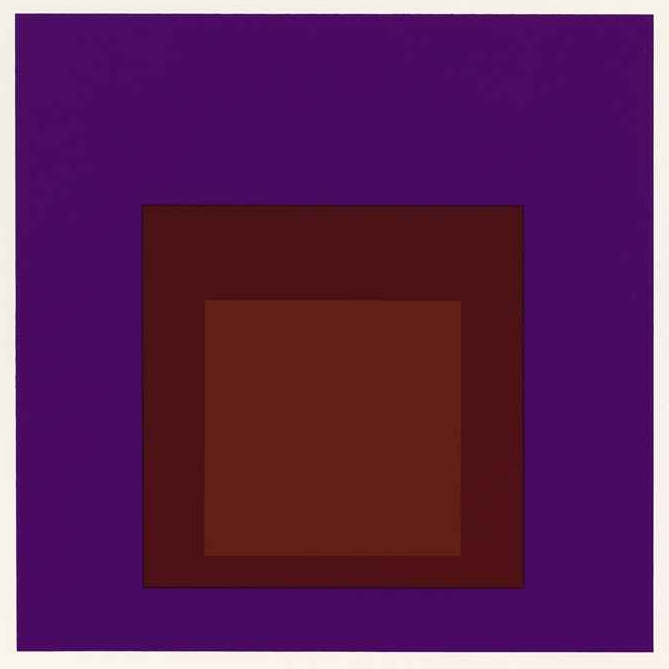Josef Albers: Homage to the Square

Josef Albers (1888-1976) was an American-German artist best known for his iconic color square series, Homage to the Square, which he began in 1949 and major contributions to color theory. A student of famed colorist Johannes Itten, Albers took over his course at the Bauhaus school in 1923 and co-taught with László Moholy-Nagy. “Simultaneous contrast is not just a curious optical phenomenon—it is the very heart of painting,” Albers explained of his lifelong pursuit of investigating color relationships. “Repeated experiments with adjacent colors will show that any ground subtracts its own hue from the colors which it carries and therefore influences.”
Each work reveals how our perception of a single color is variable—it might project or recede, look brighter or dimmer—depending on its proximity to and interaction with adjacent colors. Like a composer writing imaginative variations on a single melodic theme, Albers created countless color combinations in which the value and effect of individual colors change markedly from work to work.
Born on March 19, 1888 in Bottrop, Ruhr District, Germany, Albers came to the United States after the closure of the Bauhaus school in 1933 and went on to teach at the Black Mountain College, where Cy Twombly and Robert Rauschenberg were among his students. Published in 1963, Albers’ Interaction of Color remains one of the most influential texts used in contemporary arts education.
In 1981 Mr. and Mrs. Tony Andress gifted this set of ten lithographs from Albers’ 1965 series Homage to the Square, Soft Edge – Hard Edge to the Abilene Fine Arts Museum. This is the first time the full set of prints has been exhibited at the museum.